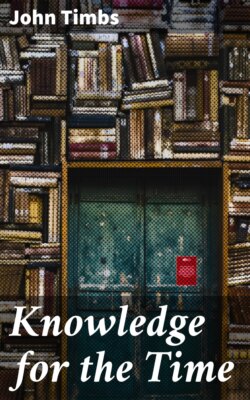Читать книгу Knowledge for the Time - John Timbs - Страница 44
На сайте Литреса книга снята с продажи.
The Cato-street Conspiracy.
ОглавлениеTable of Contents
Early in the year 1820—a period of popular discontent—a set of desperate men banded themselves together with a view to effect a revolution by sanguinary means, almost as complete in its plan of extermination as the Gunpowder Plot. The leader was one Arthur Thistlewood, who had been a soldier, had been involved in a trial for sedition, but acquitted, and had afterwards suffered a year’s imprisonment for sending a challenge to the minister, Lord Sidmouth. Thistlewood was joined by several other Radicals, and their meetings in Gray’s-Inn-lane were known to the spies Oliver and Edwards, employed by the Government. Their first design was to assassinate the Ministers, each in his own house; but their plot was changed, and Thistlewood and his fellow conspirators arranged to meet at Cato-street, Edgeware-road, and to proceed from thence to butcher the Ministers assembled at a Cabinet dinner, on Feb. 23rd, at Lord Harrowby’s, 39, Grosvenor-square, where Thistlewood proposed, as “a rare haul, to murder them all together.” Some of the conspirators were to watch Lord Harrowby’s house; one was to call and deliver a despatch-box at the door, the others were then to rush in and murder the Ministers as they sat at dinner; and, as special trophies, to bring away with them the heads of Lords Sidmouth and Castlereagh, in two bags provided for the purpose! They were then to fire the cavalry-barracks; and the Bank and Tower were to be taken by the people, who, it was hoped, would rise upon the spread of the news.
This plot was, however, revealed to the Ministers by Edwards, who had joined the conspirators as a spy. Still no notice was apparently taken. The preparations for dinner went on at Lord Harrowby’s till eight o’clock in the evening, but the guests did not arrive. The Archbishop of York, who lived next door, happened to give a dinner-party at the same hour, and the arrival of the carriages deceived those of the conspirators who were on the watch in the street, till it was too late to give warning to their comrades who had assembled at Cato-street, in a loft over a stable, accessible only by a ladder. Here, while the traitors were arming themselves by the light of one or two candles, a party of Bow-street officers entered the stable, when Smithers, the first of them who mounted the ladder, and attempted to seize Thistlewood, was run by him through the body, and instantly fell; whilst, the lights being extinguished, a few shots were exchanged in the darkness and confusion, and Thistlewood and several of his companions escaped through a window at the back of the premises; nine were taken that evening with their arms and ammunition, and the intelligence conveyed to the Ministers, who, having dined at home, met at Lord Liverpool’s to await the result of what the Bow-street officers had done. A reward of 1000l. was immediately offered for the apprehension of Thistlewood, and he was captured before eight o’clock next morning while in bed at a friend’s house, No. 8, White-street, Little Moorfields. The conspirators were sent to the Tower, and were the last persons imprisoned in that fortress. On April 20th, Thistlewood was condemned to death after three days’ trial; and on May 1st, he and his four principal accomplices, Ings, Brunt, Tidd, and Davidson, who had been severally tried and convicted, were hanged at the Old Bailey, and their heads cut off. The remaining six pleaded guilty; one was pardoned, and five were transported for life.
Southey relates this touching anecdote of Thistlewood’s last hours:—
“When the desperate and atrocious traitor Thistlewood was on the scaffold, his demeanour was that of a man who was resolved boldly to meet the fate he had deserved; in the few words which were exchanged between him and his fellow-criminals, he observed, that the grand question whether or not the soul was immortal would soon be solved for them. No expression of hope escaped him; no breathing of repentance, no spark of grace, appeared. Yet (it is a fact which, whether it be more consolatory or awful, ought to be known), on the night after the sentence, and preceding his execution, while he supposed that the person who was appointed to watch him in his cell was asleep, this miserable man was seen by that person repeatedly to rise upon his knees, and heard repeatedly calling upon Christ his Saviour to have mercy upon him, and to forgive him his sins.”—The Doctor, chap. lxxi.
The selection of Cato-street for the conspirators’ meeting was accidental; and the street itself is associated but indirectly in name with the Roman patriot and philosopher. To efface recollection of the conspiracy of the low and desperate politicians of 1820, Cato-street has been changed to Homer-street.
